Mesh vs Baffles for hoods
Whats the pros/cons of mesh vs baffles for filters in a range hood?
I am looking at an Elica that comes with a mesh filter, but based on the AJ Madison site I believe that I could swap to a baffle latter. (30" 600 CFM chimney) Would it be worth getting the optional baffles, or should I try to find a hood that has baffles originally.
Hood looks like this;
http://www.ajmadison.com/cgi-bin/ajmadison/EVR630SS.html
Comments (23)
francoise47
14 years agoDear Weissman, I'm curious why so many people on Gardenweb say that baffles are easier to clean. Both mesh and baffles can be run through the dishwasher. I do understand that mesh may get clogged in a way that baffles never can if it isn't run through the dishwasher and kept clean. But shouldn't it be just as easy to pop out and clean as baffles?
Related Professionals
Cuyahoga Falls Kitchen & Bathroom Designers · El Sobrante Kitchen & Bathroom Designers · Freehold Kitchen & Bathroom Designers · Highland Park Kitchen & Bathroom Designers · Knoxville Kitchen & Bathroom Designers · Los Alamitos Kitchen & Bathroom Remodelers · Manassas Kitchen & Bathroom Remodelers · Plant City Kitchen & Bathroom Remodelers · Burr Ridge Cabinets & Cabinetry · Berkeley Heights Cabinets & Cabinetry · Effingham Cabinets & Cabinetry · Salisbury Cabinets & Cabinetry · Stoughton Cabinets & Cabinetry · Tacoma Cabinets & Cabinetry · Wyckoff Cabinets & Cabinetrydavidro1
14 years agoI believe the prevailing winds have it that mesh is best, at low speeds and for weak fans, while baffles are best for high CFM capacity fans, at medium to high speeds. Many people on GW like having things be big.
kaseki
14 years agoAlthough I've seen a prohibition against mesh filter use in commercial cooking hoods in some version of the relevant NFPA code, that is probably not relevant here.
Rule 1: The purpose of kitchen hood ventilation is capture and containment of cooking effluent.
Rule 2: Achieving Rule 1 while meeting aesthetic, cost, and size requirements often requires significant compromise.
Baffles retain their efficiency over long periods of time, and have a constant pressure loss that is probably lower than for mesh filters of the same size.
Mesh filters pick up dust, lint, and hair and their pressure loss increases over time until washed. Capture increases with added lint for a while until the flow drops and ventilation is compromised.Baffles wash easily because the surfaces do not trap lint.
Mesh filters trap lint and washing doesn't always remove it without some aggressive action.Filters only collect some sizes of grease particles, the goal is for the flow to carry the rest out of the vent ducting. Flow is compromised when the mesh filters accumulate obstructive material. If the larger grease particles didn't condense in the ducting, we wouldn't need mesh or baffles.
Mesh filters require less height than baffles, but flat mesh filter hoods tend to reflect some of the rising effluent unless the flow rate is high enough.
The height used by baffles improves containment in the hood.Bottom line: Mesh filters used with enough flow rate for the cooking environment can be effective, but mesh cleanliness is critical.
kas
amcook
14 years agoFirst hand experience with mesh is that efficiency drops off very quickly. If you're not cooking things that give off lots of grease smoke/vapor, then mesh is fine. The problem comes when grease is present and, as designed, gets caught in the mesh. The efficiency of mesh decreases very fast as compared to baffles. If you go with mesh, take them out and run them through the dishwasher every week. In fact, buy an extra mesh filter to swap out.
BTW, people here tend recommend larger vents because many have experienced the regret of sizing the vent too small. This is partially due to the fact that dealers tend not to want to sidetrack a sale because the buyer balks at the vent cost. Also, it really depends on the type of cooking you do. I do a lot of stir frying and I tell you I use ever bit of vent I've got and then some. In my case, mesh just wouldn't cut it.
schorert
9 years agoI had a high end over the range non-vented microwave hood and it had the mesh screens and the whole unit is basically useless as a hood, and the mesh screens were always really gross. the cabinets above this "hood" were always grease coated.
Someone interested enough to look at the capital range will be curious enough to look under the hood, so to speak. I think the baffles "look authentic" above a cook's range. The capture grease pretty well, but need to be cleaned to look nice.(I'd guess in the dozen years we had that over-the-range micro-hood we cleaned those mesh screens about five times...
I have a zephyr hood (modified to fit my hood cabinet), 8" duct to a copper vent...the copper has a mesh screen, I'll be curious to see how that looks after a year or two.derrickthecrane
9 years agokaseki, wow! That's the best explanation of the difference between mesh and baffle I've ever seen. Very good point about keeping the mesh filter clean, I wash it every 3-4 days and it doesn't seem to block the airflow at all.
shorert - microwave hoods are useless at best, and if it's recirculating, sorry, it's just a waste of space. I've had one initially, some of my friends had them too, but none of them ever worked well. Once I switched to an actual chimney hood, there was a world of difference - esp. with the grease film on the cabinets (which was GONE).
Anyone I know who's considering a kitchen remodel, I always tell them to get a full-size hood and put the microwave somewhere else. It makes such a huge difference in terms of cleanliness and comfort - no hot air in your face, no steam clouds all over the kitchen, no grease all over the cabinets.
foodonastump
9 years agoI disagree that OTR MWs are "are useless at best." In my experience they heat food just as well as a regular MW. And they can save valuable space in a small kitchen. If only the ventilation feature worked better.
But then again, if the filter is always gross then I s'pose it must be doing its job? At least some of its job? Kind of like asking your toddler to "help" rake leaves?
In all seriousness, my MIL inexplicably changed over to an OTR MW and while it doesn't do much for stove-top fumes it seems to draw enough of the oven heat from the range in the summer to keep the kitchen quasi comfortable. When she turns it on.
kmg67
9 years agoIn the market for a 36" wall mounted hood right now that I want to put above a 36" induction cooktop. I really like the KOBE RA02 (http://s2.img-b.com/ventingdirect.com/imagebase/resized/x800/kobeimages/kobe-ra0236sqb-1-110.jpg). Its 24" deep with baffle filters but the wife thinks it looks a little clunky. I like some of the Imperial hoods as well since they also come in 24" depth with baffle filters but they are pricey. I really don't want to spend more than a grand. Playing around with the searching options on ventingdirect.com I see that once I request a depth of 24" with baffle filters I'm not left with many options that the wife likes. When I remove either of the 24" depth requirement or the baffle filter requirement I get a lot more options from Zephr, Cavaliere and Kobe that the wife likes. Some of these are 22" deep with baffle filters while others are 24" but have mesh filters. So what do you think is more important? An extra 2" of depth or baffle filters?
We do do a lot of cooking and I guess most of the high stuff we would do would take place on the middle hob of the cooktop which even with a 22" deep hood, it should be able to capture everything.
kaseki
9 years ago"Daddy, daddy, if you buy me a doggie I promise to take care of him."
Is your wife's urge to clean baffles going to end up like the aforementioned promise usually does, or is she a fanatical enthusiastic cleaner who will take them down and clean them as often as necessary, possibly weekly?
If the former, then it is worth considering that baffles will continue to function even when greasy.
kas
gtadross_gw
9 years agoI have baffles and my parents have mesh. We clean ours with roughly the same frequency - once every 2-3 months. With mesh, theirs never gets clean, no matter how many times they put it into the dishwasher. It's to the point where they have to but replacement mesh filters.
I can get my baffles very clean, even after months of heavy use, but just putting them in the dishwasher won't do it. What I do is put them (4) in the sink and cover them with boiling water from the stove and let them soak with lots of Dawn soap.
After about an hour, I don the heavy duty dish washing gloves and proceed to scrub them all over with a scotch green thin scrubber. I use a chopstick to push the sponge between the channels of the baffles. Once cleaned like that, I run them through the heavy duty cycle on the dw but I don't use heated dry, which would only harden any residual grease on the surface into a veneer.
The whole process takes about 2 hours (which is why I only do it every 2-3 momths$, but they come out like brand new
gigelus2k13
9 years agoAs Mr. RangeHood already explained in a previous post, the mesh filter is sort of working only if it's fitted on a low airflow hood and if you keep it clean at all times.
Baffles are the ticket. Not only they drop the pressure *less* than mesh filters (thus giving the user more of the CFMs advertised), but they continue working very well even if dirty. IMO, the only downside of a very dirty baffle is that it emits a faint odor of the smelly, oily, smoky and burnt particles the hood helped remove from the kitchen.
OTOH, the 24" depth (or, even better, 27") are a must if one cooks with high heat on the front burners. I like my Kobe RA02, but its baffles are far shorter than the advertised 24" (maybe 16" long?), thus forcing the rising air and particulates to "lick" the front underside, depositing a small amount of grease on it. A hood with baffles fully filling the underside would be best.
Baffles give a more serious look and a clunky, heavy stainless steel canopy is more fitting a Capital stove than a stylish-yet-ineffective range hood.
P.S. Why Imperial would blame baffles for the pressure drop is really hard to understand.
kmg67
9 years agoInteresting gigelus2k13..never thought of the length of the actual baffles themselves.
kaseki
9 years agoOn baffle length:
One wants two things from a hood, as relentlessly pointed out on this forum -- capture and containment. For capture, the hood aperture has to be large enough to encompass the rising effluent. How large is large enough depends on many factors and I won't go over them again in this message.
Containment is related to the question of baffle length. In a commercial hood, there is often only one bank of baffles, and these are not three-feet long like the front to back depth of the hood might be. How then do they work?
What one sees within the hood aperture is a considerable height from aperture opening to the baffles in which the interior sides of the hood aperture are steeply sloped to meet the baffles. Given enough air flow, the direction of reflection of effluent at the interior sides remains upward, and the effluent is contained. In other words, no effluent curls back out of the hood.
Schlieren photography available on the www illustrates cases where there is enough and where there isn't enough flow for containment. But in nearly all the images I've seen the hood was a standard commercial hood such as may be seen at Greenheck's site. Please note that w.r.t. baffle slope commercial hoods conform to NFPA 96 while residential hood rarely (if ever) do.
For residential hoods with shallow sloped baffles and little distance from the hood aperture opening to the baffles, it is important that the baffles cover most of the aperture. The less this is true, the higher the air flow rate has to be and the noisier the air will be passing through the baffles.
kas
User
9 years agoKaseki - your comments about sloped baffles are so interesting. I expect that if I were to buy a commercial hood with sloped baffles for my home kitchen, the hood would not have the residential features I want like lighting, choice of power (i.e. high-medium-low - I expect a commercial hood just has on-off), and some attempt to have the motor be quiet. So, I wonder then if a residential hood exists with sloped baffles? Anyone know of one?
kaseki
9 years agoMy Wolf Pro Island hood has slightly sloped baffles (circa 20 degrees -- the baffle assemblies are out right now being cleaned, so direct measurement would be difficult). They do successfully drain toward capture devices on the sides, but we don't generate enough grease, even over a year, to cause more than a teaspoon of puddle. Otherwise, the baffles retain a film of grease (perhaps mostly peanut oil in the area of the induction wok). Commercial hoods use larger containers due to their high duty use and the typically greasy products being cooked under them.
Using a commercial hood in a room with an eight-foot ceiling would require some care to purchase and fit a suitable one. Normally they are set at a seven foot aperture height. See Greenheck for better information.
Commercial hoods usually have lights inside, but the ones I've seen use incandescent bulb lamps in wire cages. They are also equipped with sprinkler heads.
However ..., there are ventilation companies visible on the web (at least when I looked in 2008 before the last Fed induced economic collapse occurred) that build to order and some concession to residential function is within the realm of fabrication. Also, such residential hood custom fabricators as Modern-Aire may be able to construct whatever design you wish for. There may be a premium. :) Frankly, I don't think that the NFPA-required greater than 45-degrees slope is necessary for home use.
All commercial hood ventilation systems that I've seen or know about use roof mounted fans in upblast housings. The motors used are typical induction motors, and should work with any controller suitable for their current rating. (I prefer continuously variable myself.) In a commercial setting where the exhaust hoods vs. the MUA are balanced for a fixed flow rate, all the exhaust and intake fans may be single speed (on/off).
kas
kaseki
9 years ago[Response to a now deleted post] "The the grease is stopped by the air hitting the metal."
That statement may be a tad misleading. The VAH squirrel cage fans radially accelerate the air and entrained grease particles outward where the mixture can impinge onto the fan housing walls allowing the (larger) particles to condense. This is essentially the same process that baffles perform except the baffles angularly accelerate the air as it moves around their curved surfaces to collect the (larger) grease particles.
If the VAH approach were more efficient than baffles, commercial hoods would use it. Electrical cost of moving air is one of the highest costs borne by commercial cooking establishments.
Also of importance in residential use, the VAH approach puts the blade tip turbulence noise close to the cook's ears. I think for the same flow rate per unit area of hood aperture, the VAH fan noise will be louder than the baffle turbulence noise resulting from air pulled by a remote fan. This would be consistent with Clinresga's measured results reported in a past topic.
kas
This post was edited by kaseki on Mon, Dec 8, 14 at 9:40
practigal
9 years agoRecently I went into a kitchen shop that services a largely Asian community. They had a self-cleaning filterless range hood. They explained to me that cooking Asian food over a wok generates a phenomenal amount of grease and heat and therefore it is necessary to have a really good hood that cleans up really easily. They thought that all of their hoods were 600 CFM or more, the hoods collected grease into a reservoir before it goes into the duct (all were vented), and the idea was that you put water up into the range hood ran the motors for a bit on the clean cycle, and then dump out the water. The underside of these hoods is distinctive in that you can clearly see the two motors. My brother has seen these in action (he lives in that neighborhood), but I have not. Has anybody tried any of these? My understanding is that the installation is easy, (which is good because the installation instructions are frequently either missing or not in English) but that these do work substantially better than most hoods on the market these days. The few reviews that I have found on Amazon seem to back this up. Yes, I prefer to buy American but I am not unwilling to try something new.
Here is a link that might be useful: Sample rangehood video
herrblint
8 years agoThis is a good discussion so I'd prefer to append my question rather than start a new question. Hope that's OK.
Do mesh filters keep the squirrel cage cleaner on internal blower designs than baffles do?
Does buildup of grease on the squirrel cage affect performance?
We're shopping for a replacement undercabinet range hood (rear vented is our only option) and I'd like to pick the model that is easiest to keep clean, including that squirrel cage if its getting greasy can compromise the hood's performance.
kaseki
8 years agoI don't know the answer to this question. The answer may be both yes and no depending on air velocity through the filter.
If the full speed air flow is at least 90 cfm/square foot of hood aperture, then I would expect baffles to remove the larger particles, and the remaining particles may not stick to the squirrel cage blades. At somewhat lower specific flow rates, (not sure where that boundary may be), the baffles might not be as effective as the squirrel cage fins in capturing grease, although the squirrel cage, like in the VaH systems, will tend to throw off any fluids. In these lower flow situations, a mesh filter may be better at grease collection than baffles.
There may be found on the internet specialized filters for commercial situations where more exhaustive [sorry] filtering is required. For these cases stacked filters of various types including meshes can be used. However, the exhaust blower will usually still be on the roof and use a shrouded fan type blower; as far as I'm aware, squirrel cage blowers are not used in these systems.
kas
herrblint
8 years agoThanks for the info and the pun to boot :) I do have some other questions unrelated to filters, but I'll start another question for those.



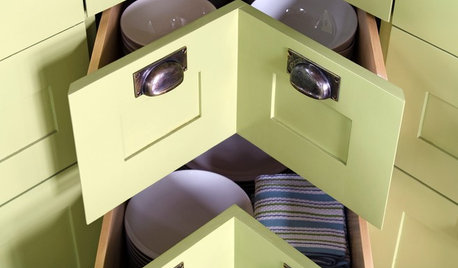
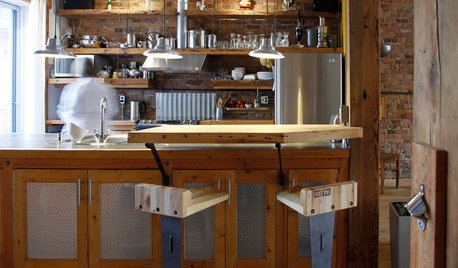

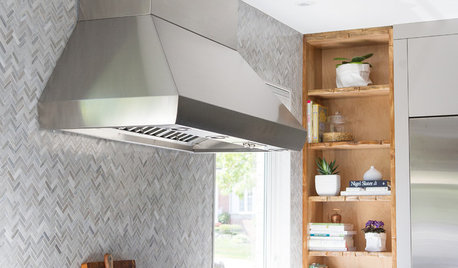







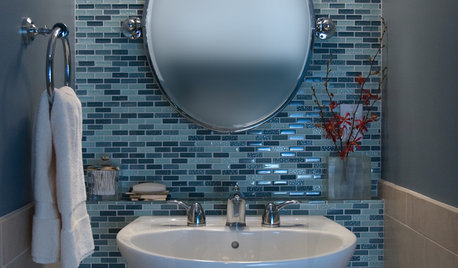
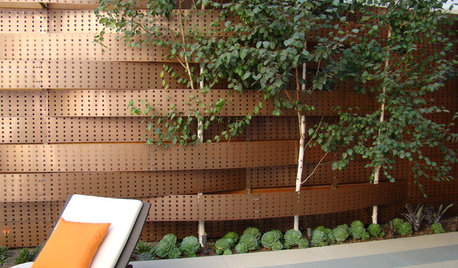


texasgal47